
About This Quiz
If you're a devout Catholic, or even if you've only attended a Catholic Mass or two, then you know that Catholicism seemingly has a language of its own. From prayers, rituals, sacraments and saints, the Catholic Church has a host of unique terminology that can be bewildering to those of other faiths.Â
The Roman Catholic Church is the largest Christian church in the world, with more than 1 billion followers. Catholics believe that they continue the original Church as established by Jesus Christ over 2,000 years ago, with the pope as St. Peter's successor. Catholics are also unique among Christians because of their veneration of the Virgin Mary and the saints, whom they ask to pray for them. Famous Catholics today include John Krasinski, Josh Duhamel, Selena Gomez and Lea Michele.
Whether you spent 12 years at Catholic school, memorizing all the prayers and saints, or you maybe go to Mass on Christmas and Easter, challenge your church knowledge with this quiz on Catholic lingo. You can always ask St. Joseph of Cupertino, the patron saint of test takers, for a little help!
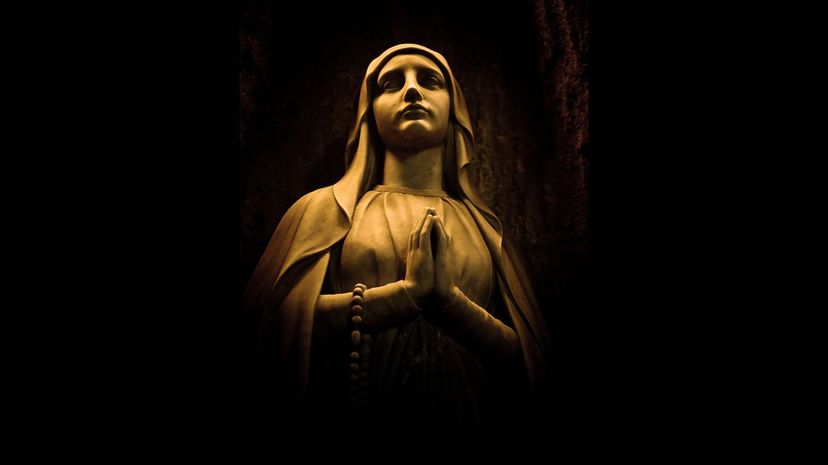
A common misconception is that the Immaculate Conception refers to Jesus' virgin birth. In fact, it refers to the belief that God erased Mary's original sin the moment she was conceived.
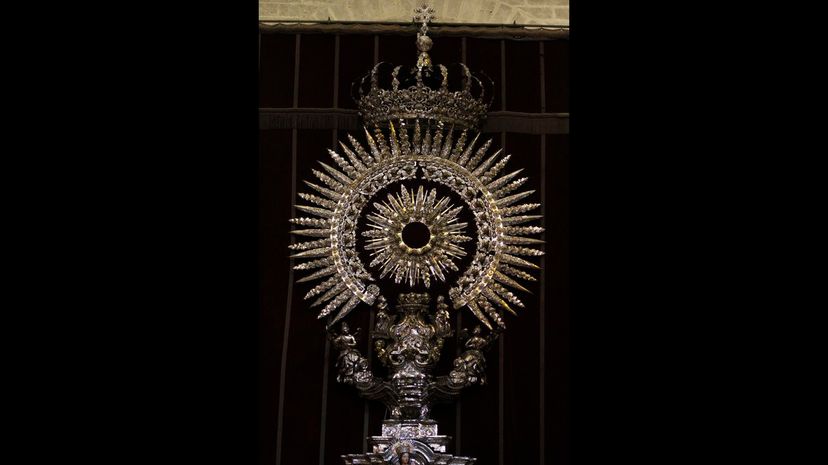
The monstrance, which is usually a gold or silver stand, holds the Host in a circular window in the center of a sunburst. Catholics focus on the body of Christ during Eucharistic adoration.

The rosary has five "decades," or sets of 10 beads, and a crucifix. When Catholics say the rosary, they use the beads to keep track of the prayers while they focus on Jesus' mysteries.
Advertisement
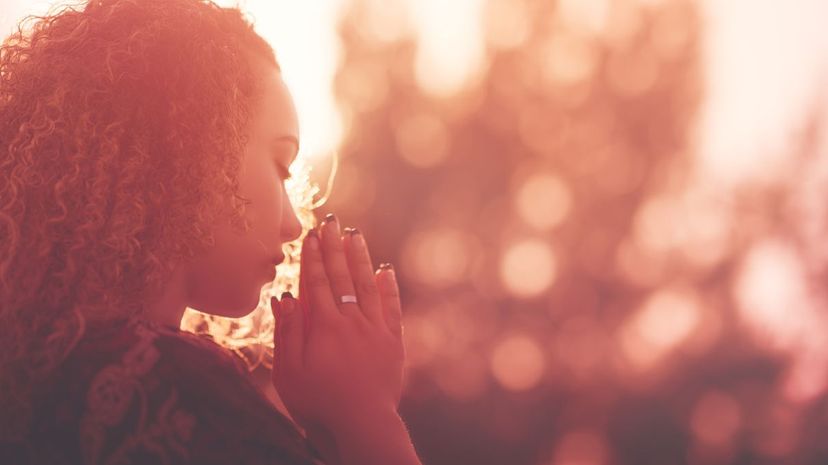
Catholics pray novenas when a loved one has died or in the nine days leading up to a feast day. A novena typically involves lighting candles and making petitions to God, the Virgin Mary or the saints.

Penance is the way Catholics repent, or show remorse for their sins. A priest will usually tell the penitent person to say a number of prayers or perform an act to atone for their sins.

All members of the church who are not ordained as clergy are known as laity or lay people. Laity can participate in the Mass by reading the Bible readings and distributing Communion.
Advertisement
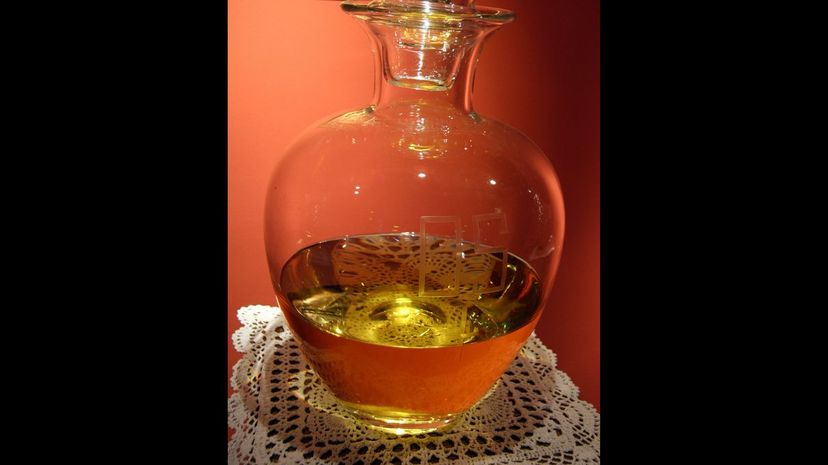
Chrism is made from olive oil and balsam, giving it a strong, sweet smell. For sacraments like baptism and confirmation, a priest anoints a person on the head with consecrated chrism.
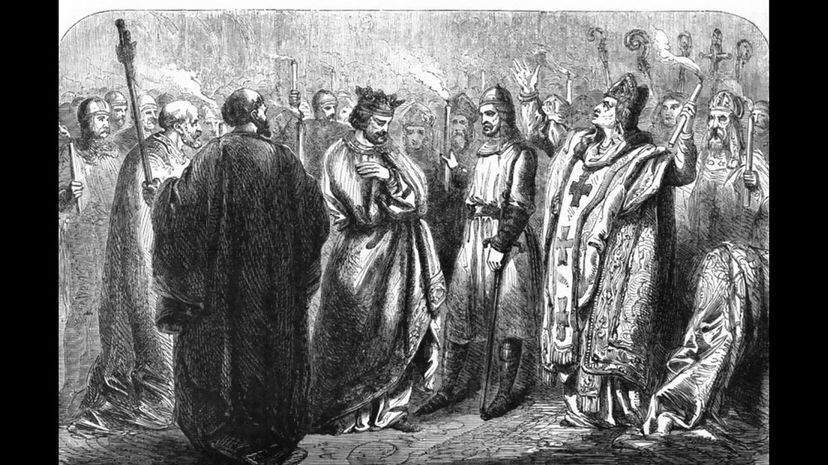
Excommunication is the most extreme penalty for church members who have seriously sinned. They can still attend Mass but can't receive Holy Communion or other sacraments until they repent.

A bull gets its name from the lead seal ("bulla" in Latin) attached to the the pope's edicts to show they're genuine. Today, a bull is the most formal and serious type of announcement by the pope.
Advertisement
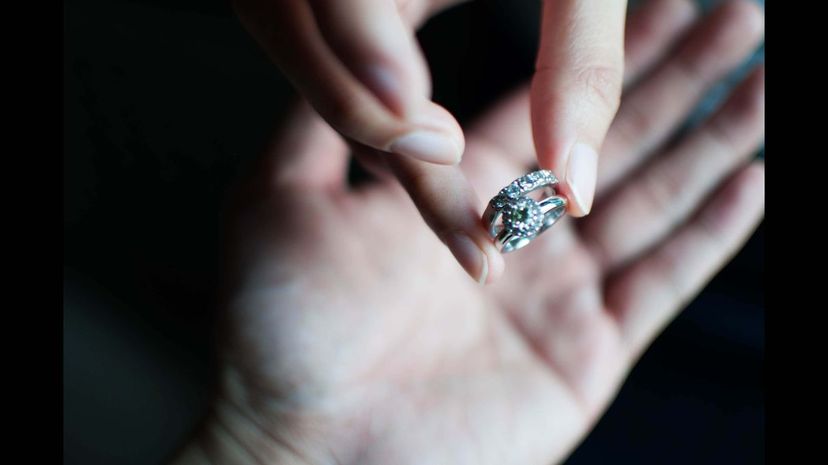
An annulment is not the same as a divorce. Rather, it occurs when a married couple can show that their marriage was never valid. Divorced Catholics need an annulment before they remarry.
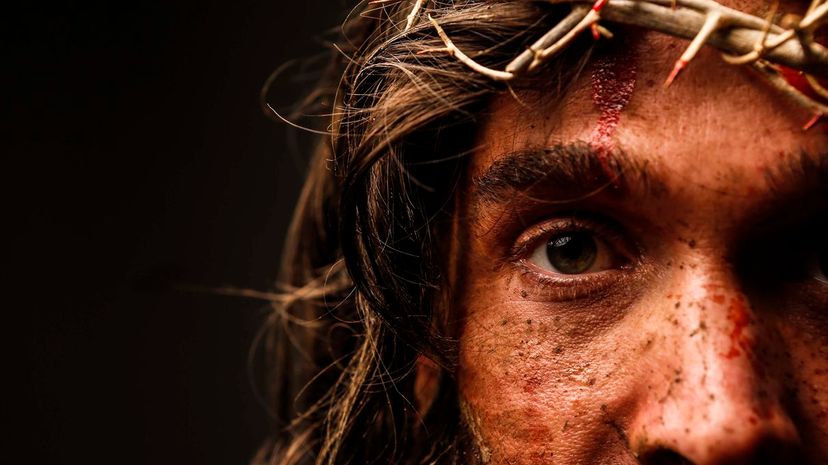
Passion comes from the Latin "passio," meaning suffering. The Passion of Christ includes his being betrayed, arrested, beaten and crucified. Catholics reflect on the Passion during Holy Week.
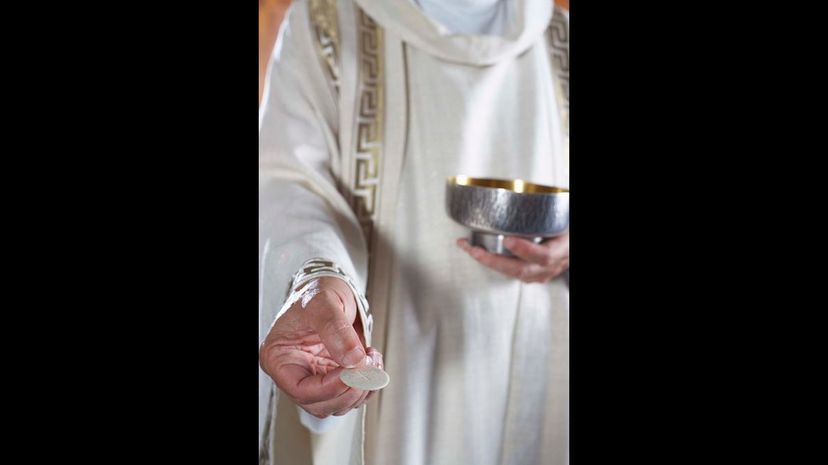
Catholics believe the Holy Eucharist is not merely a symbol of Christ's body and blood. They believe that, through transubstantiation, the bread and wine become the body and blood of Jesus.
Advertisement
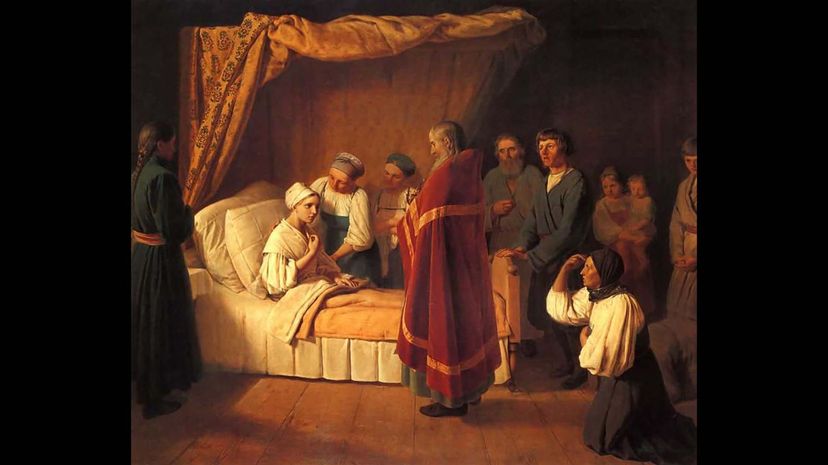
Part of the last rites, viaticum is giving Holy Communion to a person who is dying. The practice is seen as a way of giving the person spiritual food as they make their way into the afterlife.
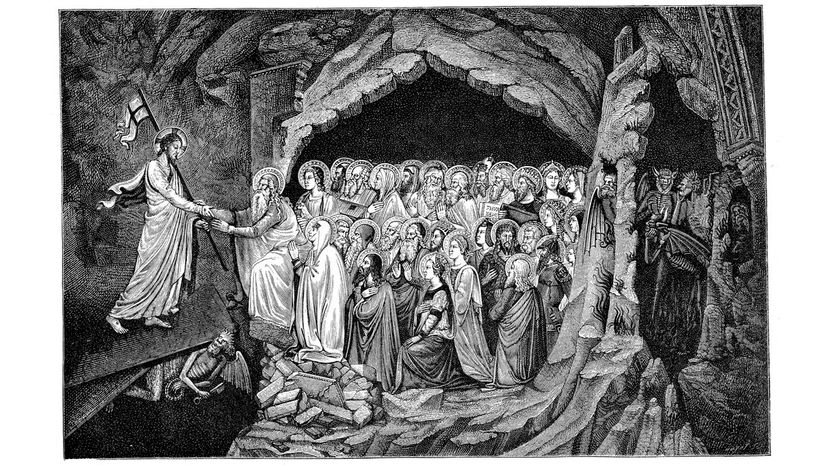
Before souls enter heaven, they're purified of sins in purgatory. Purgatory is often confused with limbo, but the Catholic Church no longer teaches the idea that unbaptized children go to limbo.
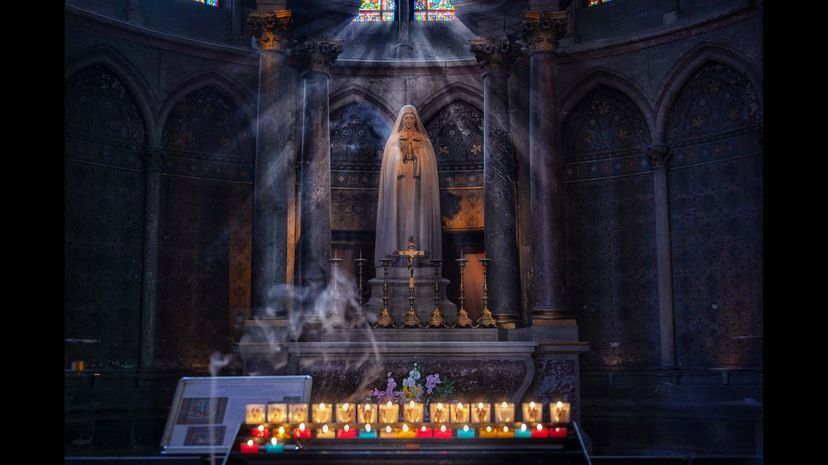
Catholics don't worship the Virgin Mary. Instead, they show her great respect because she's Jesus' mother. Catholics often ask Mary to intercede for them or take their prayer requests to Jesus.
Advertisement
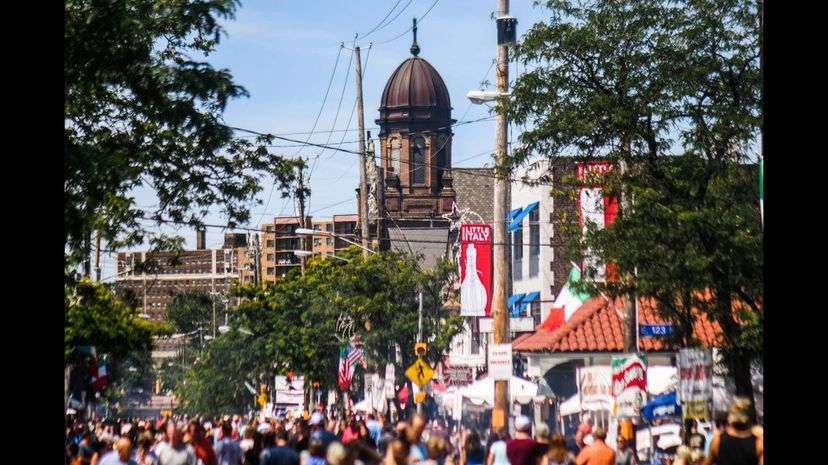
Catholic dogma holds that the Virgin Mary was immediately assumed, or taken up, into heaven when she died. The Assumption is a special holy event depicted in many classic works of art.
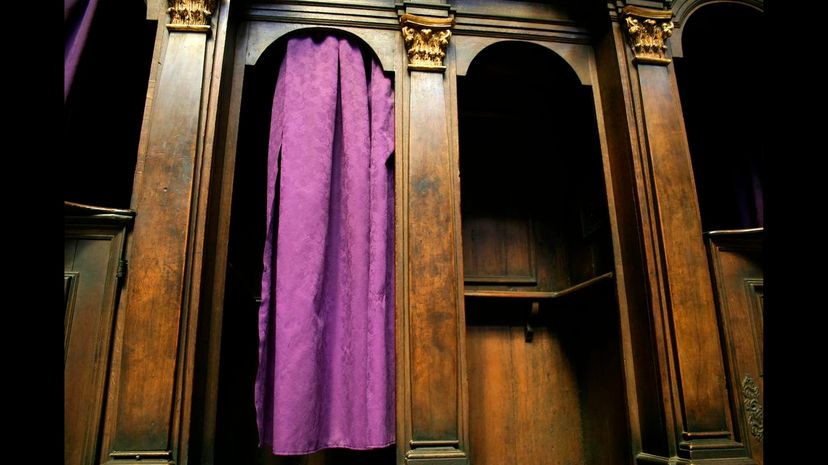
You've likely seen confessionals in movies. They're stalls in which the priest and the penitent speak through a screen or curtain. Now, that'll be five Hail Marys and 10 Our Fathers.
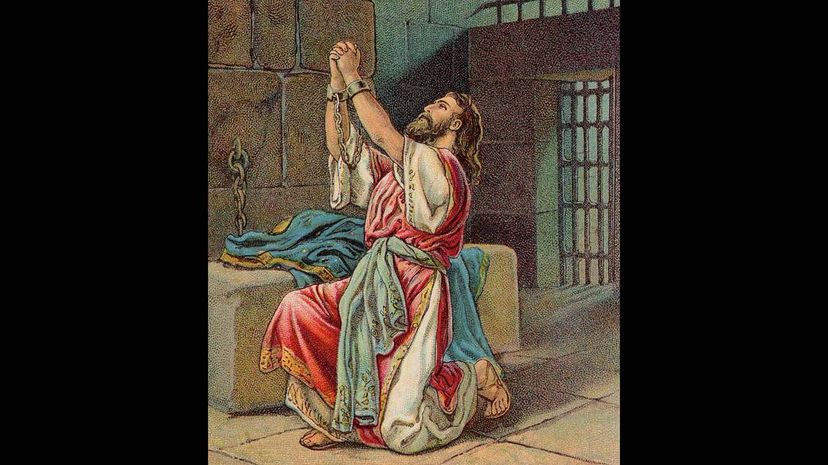
"Mea culpa," you might say when you've messed up. It's a phrase repeated three times in the Confiteor, a prayer said at Mass to acknowledge one's sins. It dates back to Chaucer's time.
Advertisement

Venial sins are the less serious variety of sins, although they still need to be confessed. Original sin is the sin inherited from Adam and Eve. Mortal sin is the most severe kind.

"What are you giving up for Lent?" is a question Catholics know well. They typically give up some indulgence during Lent to remind them of Christ's sacrifice. Oh, and there's Fish Fridays.
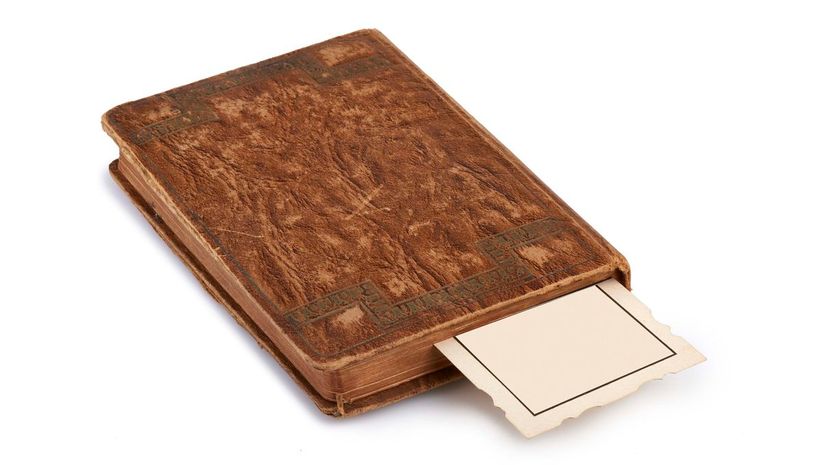
The liturgy involves all the words, actions, rituals, prayers and songs of the Catholic Mass and worship. For instance, the Mass has three Scripture readings, one from the Gospels.
Advertisement
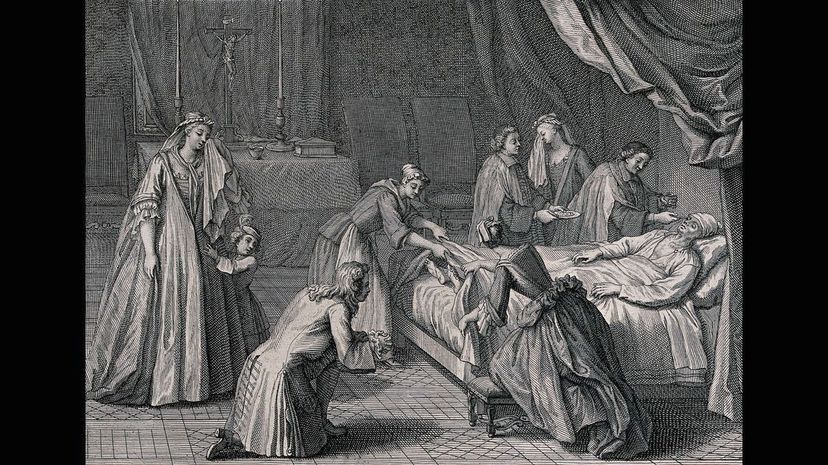
One of the sacraments (usually the last one receives), extreme unction is when a priest anoints a sick or dying person with oil. It's meant to give them grace and strength near the end of their life.

"Agnus Dei" is Latin for "Lamb of God," which is one of the titles that the Gospel of John gave to Jesus. The cantor typically sings this phrase during the consecration of the Holy Eucharist.
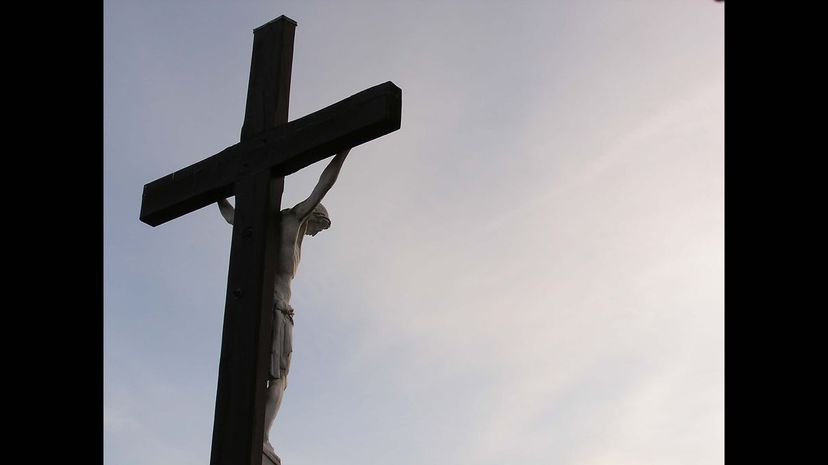
INRI stands for the Latin phrase for "Jesus of Nazareth, King of the Jews." The Romans who executed Jesus put it on the cross as a message to other Jews who might revolt against Roman rule.
Advertisement
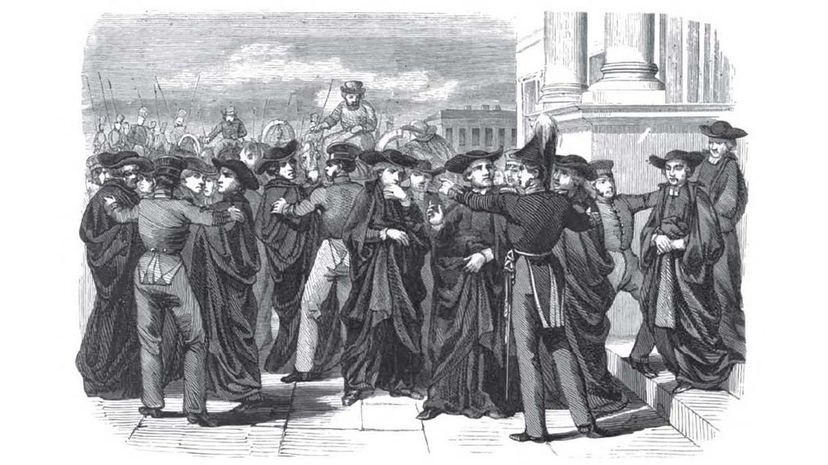
Founded by St. Ignatius of Loyola, the Jesuits are an order of priests who today are important in Catholic education. Famous Jesuits include missionary Francis Xavier and Pope Francis.
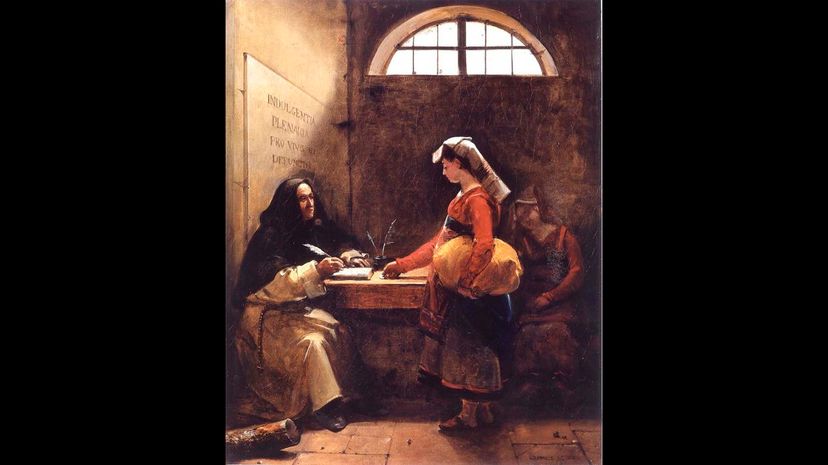
Indulgences are well known as one of the abuses of the church during the late Middle Ages. People started buying and selling indulgences, which violated the spirit of the practice.

The canonization of a saint is a lengthy process that requires, among other things, proof of two miracles. A candidate is first called "venerable" and "blessed" before reaching sainthood.
Advertisement
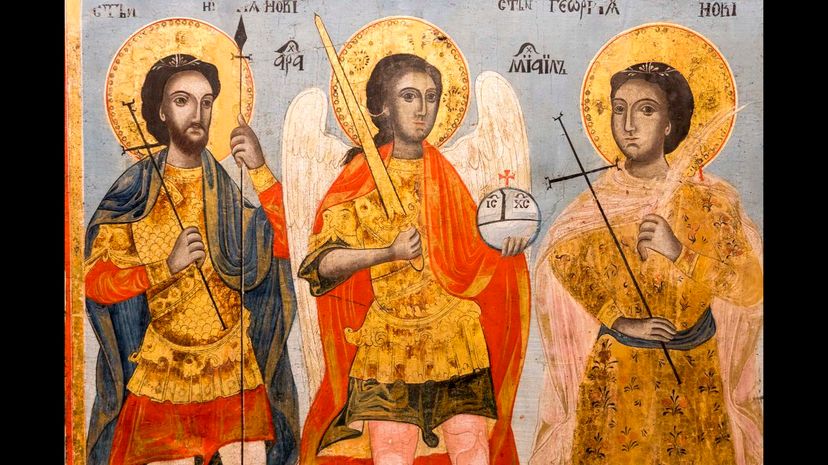
Catholic belief holds that all the bishops and popes in the Church's history descended from Jesus' original apostles. For instance, Catholics consider St. Peter to be the first pope.
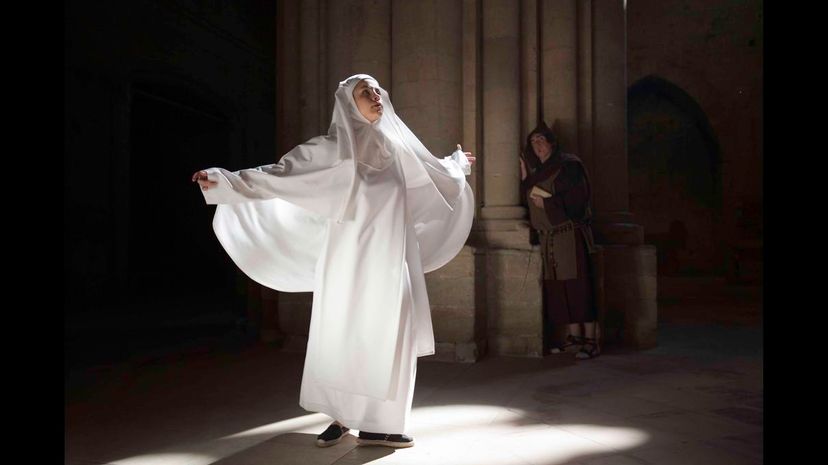
Typically seen in black and white habits, nuns are women who have taken a vow to serve God. This involves leading a life of poverty, prayer and chastity. Nuns are addressed as "sister."
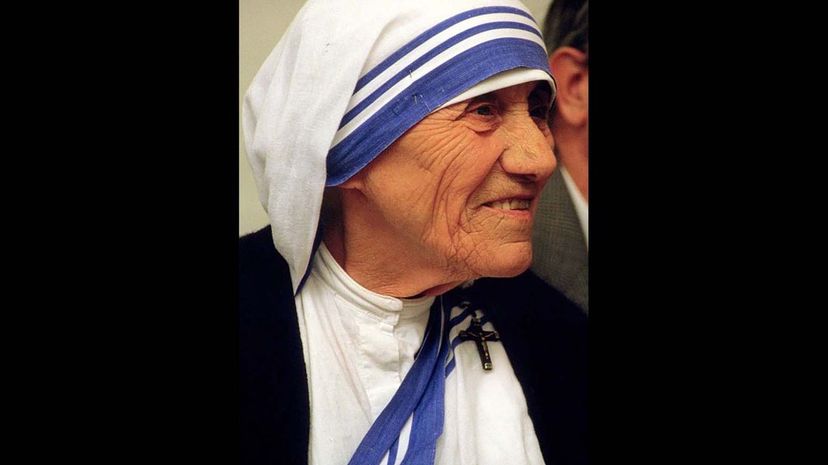
The Missionaries of Charity follow St. Teresa of Calcutta's example of caring for the poor and sick. The nuns in this group must train for nine years and give up most worldly possessions.
Advertisement

The priest gives his commentary on the Gospel reading in the homily. In some cases, a deacon can give the homily, but usually it's the priest who explains how the Scriptures relate to life.
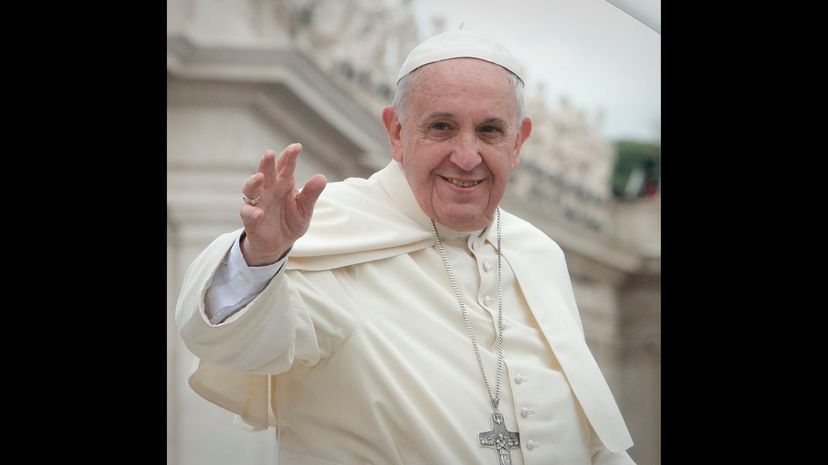
When a pope dies, cardinals gather in a conclave to elect the next pontiff. It takes place in the Sistine Chapel, and people outside wait for white smoke coming from the chapel's chimney, indicating that a new pope has been chosen.
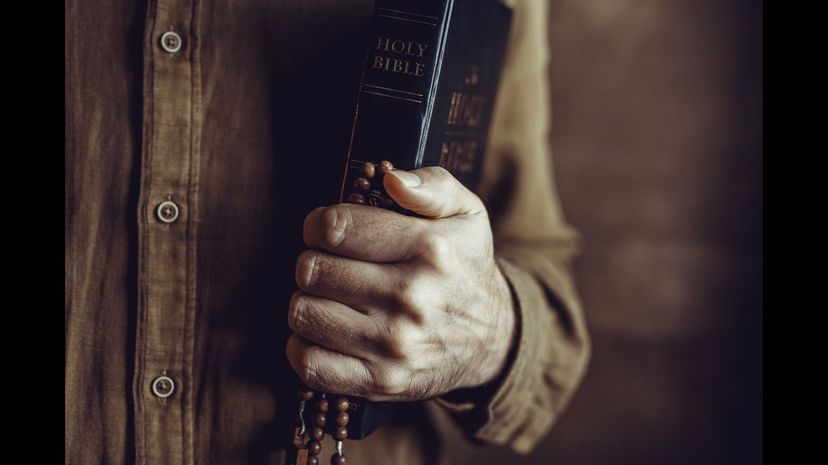
Sometimes a priest decides to leave the priesthood and become a lay person again. He needs permission from the pope to do this. When the priest has done something wrong, it's called "defrocking."
Advertisement
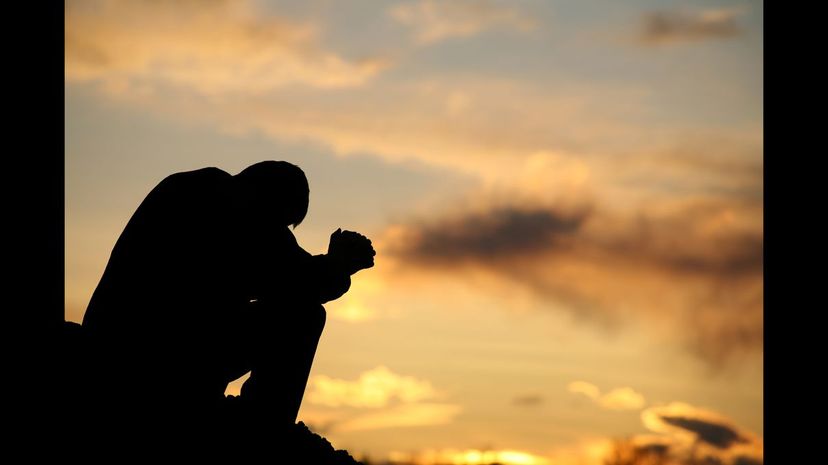
Vespers is a prayer service that begins at dusk. It includes prayers, songs and Bible readings and is held to thank God for the day. One of the songs is the "Magnificat," a song to the Virgin Mary.

One of the most well-known differences between Catholicism and Protestantism is that Catholic priests promise to live celibately. A deacon who has been widowed may decide to become a priest.
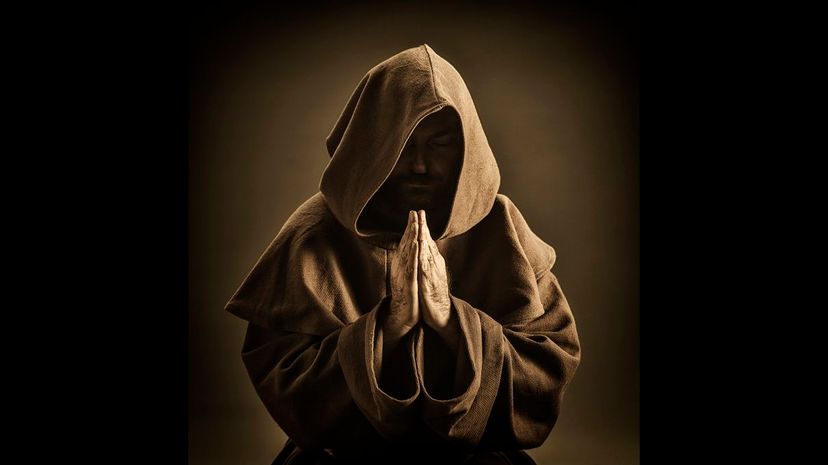
Monastic life involves giving up your possessions and devoting yourself entirely to spiritual work and prayer. Monks and nuns typically live in a monastery or a convent.
Advertisement

The first two words of the Lord's Prayer are "Our Father," hence the name. The most famous Christian prayer comes from Jesus himself, according to the Gospels of Matthew and Luke.
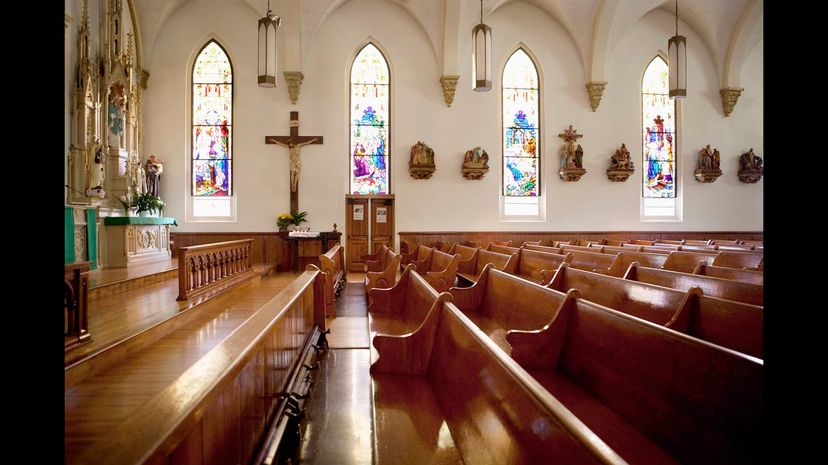
Catholics genuflect (kneel on one knee) whenever they pass the tabernacle, which holds the Holy Eucharist. They often also make the sign of the cross. Genuflecting is a sign of respect for God.
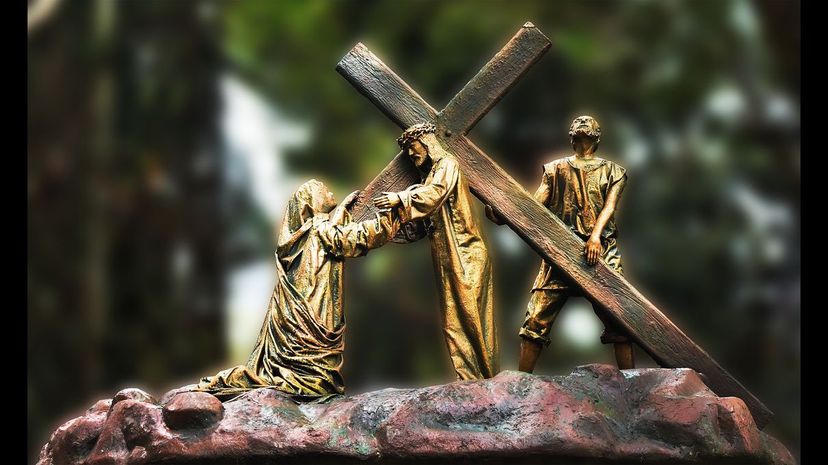
The Stations of the Cross are typically placed in order in a path around a church, and people can walk from picture to picture, saying prayers. This devotion is popular during Lent.
Advertisement
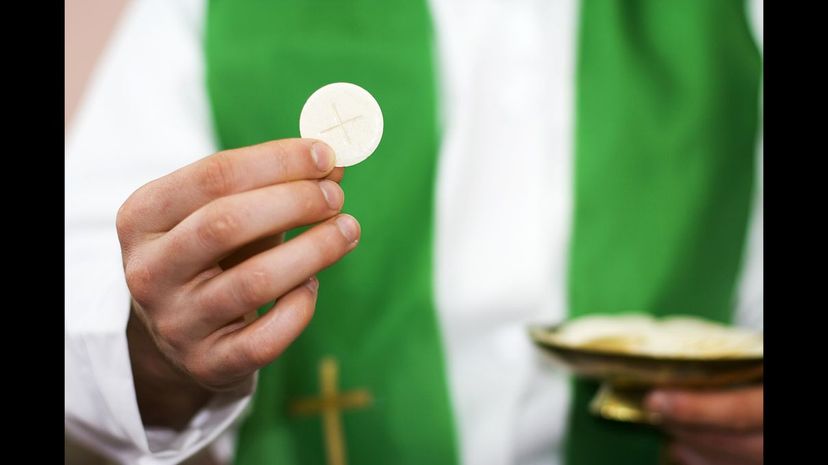
Catholics receive the body and blood of Christ at Mass to remember that Jesus sacrificed himself for humankind. Catholic children usually receive their first Holy Communion when they are around 7 years old.